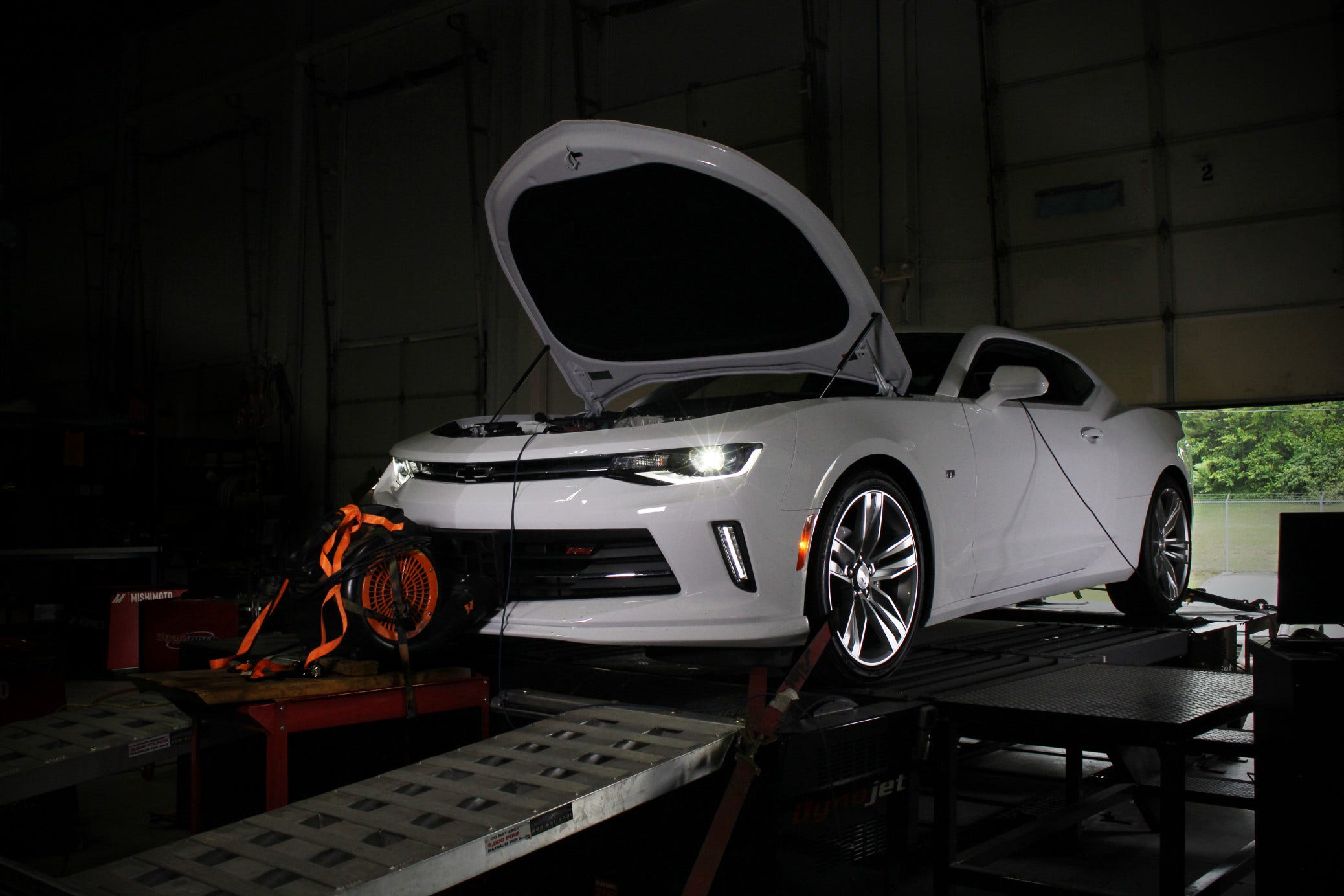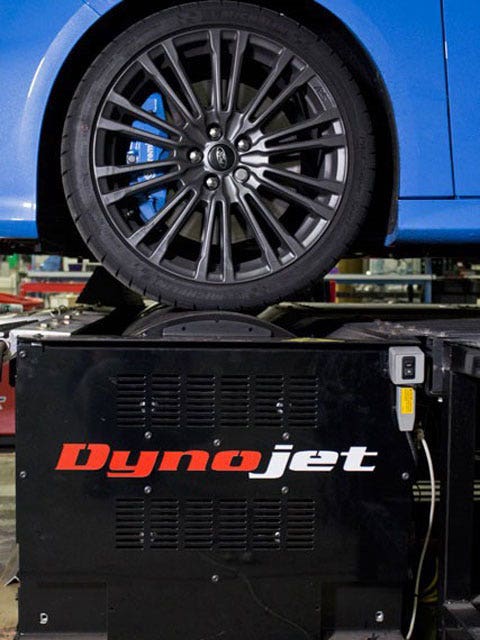
Mishimoto is Dyno-mite - Our Dynojet and Dynapack Dynos
There's nothing quite like hearing the roar of an engine mixed with the whir of rollers spinning under your wheels, all while you watch the line on the graph climb. Running a powerful car on a dynamometer (dyno) is the epitome of instant gratification for gear-heads. Here at Mishimoto, we use our dynos on a daily basis. From all-wheel-drive (AWD) hatchbacks, like the Ford Focus RS, to the high-horsepower, rear-wheel-drive Chevrolet Camaro SS, and even trucks like the Nissan Titan XD. Almost every vehicle we bring in finds itself strapped (or bolted) down to a dyno at one point or another.

Mishimoto's Dynapack system with our Ford Focus RS lurking on the Dynojet
Whether it is baseline power testing or assessing the performance of prototype intakes or exhausts on a vehicle, Mishimoto's dynos provide our engineers with valuable, real-world data they can use to make sure our products perform to the highest standards.
You may have noticed I said "dynos", and that's no mistake. Mishimoto's R&D facility houses not one, but two dyno systems: A Dynojet™ 424X and a 4-pod Dynapack™ system. Each dyno has its advantages that make it suitable for different jobs. Let's take a look at how each system works. Car nerds assemble!
Dynojet 424X

Mishimoto's Dynojet 424x utilizes an adjustable platform with two rollers, one for each axle
The dyno that car enthusiasts will be most familiar with is the Dynojet. The Dynojet 424X is a platform-style, inertia dyno that utilizes two rollers, one under the front wheels and one under the back wheels. The dyno's computer knows the mass of these rollers and measures the rate at which they accelerate to calculate horsepower and torque.
Because we often work with AWD cars, our 424X is equipped with Dynojet's Linx system. The Linx system is essentially a large belt, similar to the timing belt or alternator belt on your car (except about 100 times the size) that ties the front roller of the dyno to the back roller. This link prevents speed differences between the rollers that can damage vehicle differentials and be interpreted by the vehicle's computer as traction loss. These differences in wheel speed can trigger obtrusive traction control systems and even put the vehicle into limp mode, lowering power output, and nobody wants to see lower power on a dyno run. Even with the Linx system installed, some cars just hate being on the Dyno.
Dynapack 4-Pod System

Mishimoto's 2015 Ford Mustang GT bolted onto the Dynapack
Our other dyno, a 4-pod Dynapack system, is what you would expect if Bill Nye, Queen, and our Dynojet had a love child or four. Instead of a platform with a roller for each axle, the Dynapack system consists of pods, called Power Absorption Units, that bolt directly to the hub of the car via various adapters. Inside these pods is where all the science (or witchcraft, if you're into that kind of thing) happens. Whereas the Dynojet uses the mass of the rollers and their acceleration to calculate power, the Dynapack pods use hydraulic pressure, which resists the rotation of the car's hubs as it's held at wide open throttle. One could say the hubs are " under pressure. Now do you get the Queen reference? No? Ok. Based on the rotational speed of the car's hubs and how much hydraulic pressure is being applied, the Dynapack software calculates the power output of the vehicle.

Mishimoto's Ford Focus RS strapped down to the Dynojet
This style of dyno eliminates many variables that may be present with an inertia-style dyno. Vehicles producing high horsepower and torque can have issues with wheel slip on the dyno roller, which translates to a loss in calculated power. We've all seen those videos of Evos and Mustangs smoking tires on the dyno. The Dynpack system also eliminates the need to strap the car down. Not only does this save us time in setup, but it also means we're not putting extra weight, and therefore drag, on the car's wheels.
Why Both?

So it sounds a little redundant to have two dynos that provide similar data, right? Not quite. While the Dynapack is easier to set up, automatic vehicles hate it. Because of the way an automatic transmission translates power from the engine, it's difficult to run an automatic car on a dyno. Although this applies to all dynos, the Dynojet is slightly easier to set up than the Dynapack when it comes to automatic transmissions. Another reason to have both dyno systems is a critical component to any business: time. The more time we have to test and tune our products, the better. Having two dynos means we can test two cars at once, which means two products are being developed in the same amount of time that one product can be developed with one dyno.
We hope you now have a little better insight into our dyno systems and how we use them to help make great products for your vehicle. Without our dynos we'd have no way of letting you know just how effective our products are. Plus, we'd really miss the sounds our cars make indoors, at wide open throttle. Speaking of which, how does a playlist of some beautiful dyno runs sound? Check it out and keep an eye out for more equipment profiles coming soon!
Keep up with the Mishimoto blog here and make sure you check out selection of aluminum radiators, oil catch can kits, and performance air intakes to make sure your car is firing on all cylinders.
Thanks for reading!
-Steve




